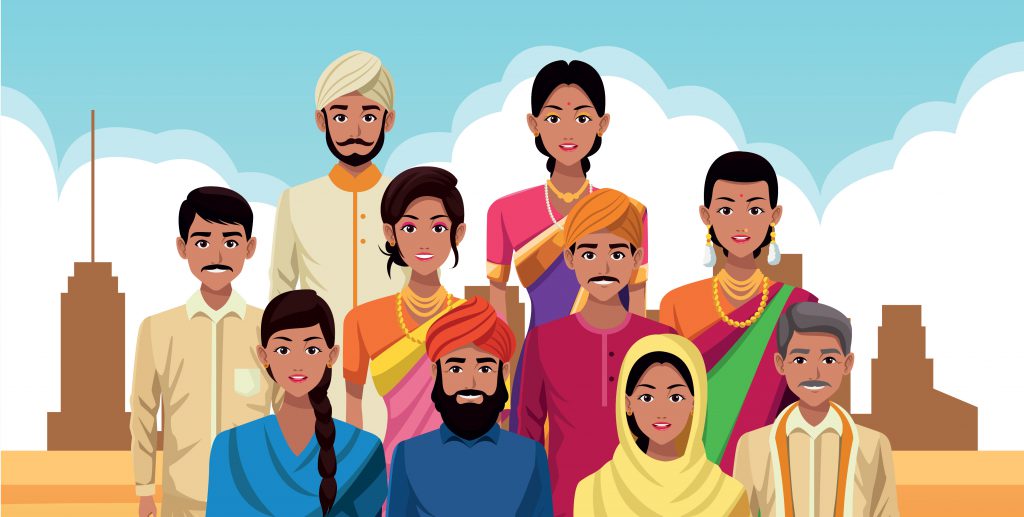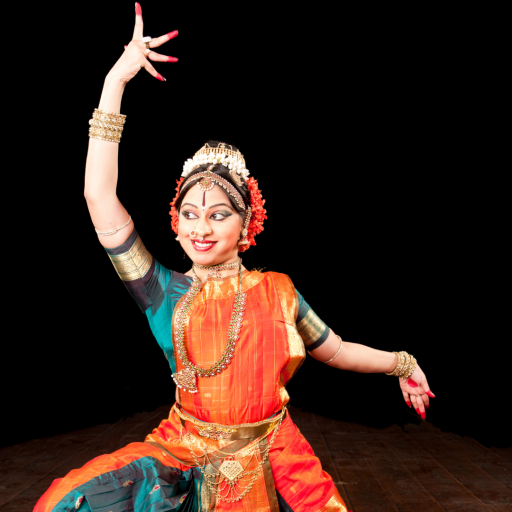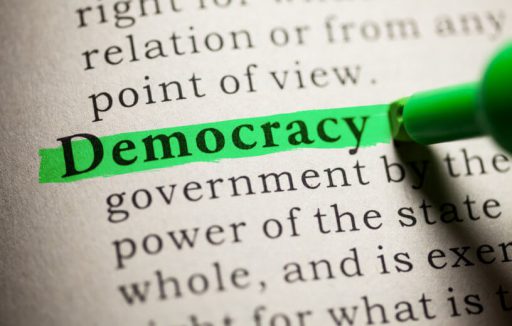January Activity – Pride of Goa
OBJECTIVES
- Students will be able to recognize the uniqueness of their state.
- Students will be able to identify different areas where they should feel proud of their state’s art & culture
OUTCOMES
1. Students will be able to describe the pride of being Goan in their own words
SKILLS AND VALUES
Skills - Communication, Collaboration, and creativity
Values –Diversity
SESSIONS’ OVERVIEW
| S. No. | Session Details | Estimated Time Required |
| 1. | Step 1: Introduction
Step 2: Booklet Preparation |
45 min |
| 2. | Step 3: Booklet Presentation
Step 4: Debrief of Activity |
45 min |
MATERIAL REQUIRED
Papers, pens, any available craft materials (optional)
STEPS OF THE ACTIVITY
Session 1: For a 45 min session Step 1-2
Step 1 – Introduction
Time: 5-7 minutes
1. Ask students to think about the 1 best thing about Goa for a minute and what they like about the same. (For Eg, music, food, dance, architecture, heritage, etc.)
2. Take 3-4 responses and start the class with a brief introduction about the activity using introduction section.
Step 2 – Main activity – Booklet preparation
Estimated Time: 30 mins.
1. Divide the students into 4-5 groups to begin the activity.
2. Ask the students to sit in their own groups. If the class size is large, you can divide into more number of groups ensuring 6-8 students per group by repeating the themes.
3. Assign the common themes or areas to the groups either by asking group preference or randomly assigning one theme. Themes are:
- i. Dance
- ii. Music
- iii. Food
- iv. Goan Festivals
- v. Historical Sites
4. Ask them to discuss and research in groups the theme assigned. They can also refer to the handout given in Annexure 1.
- i. For example, if Group 1 is allotted the area of Dance, then they need to discuss the most popular Dances of Goa – name of the dances, who performs it, its features, etc.
- ii. If Group 2 is assigned the topic of food, they need to discuss the famous foods of Goa, which part of Goa it belongs to, recipe, nutritional value, etc.
5. Tell them they have to prepare a small booklet (5-10 pages maximum) on the theme. They can use drawing sheets/available papers to make the booklet.
6. Tell them to discuss the information they will cover in the booklet, how they will present it, the flow of information, and what supporting pictures or material they will need.
Homework: (5 mins)
Teacher would ask students to refine their booklets by researching more facts on the themes and bring them in the next session. They can use photos, articles, and newspaper cuttings to make their booklet more attractive. Books can be decorated by drawing borders, using available materials following the best out of waste approach.
Note: Please pre-inform the date of the next session for students to bring completed booklet.
Session 2: For a 45 min session Step 3-4
Recap: (5 min)
The teacher asks students to share about how they engaged as a group to refine the booklets to help set context for the session.
Step 3 – Presentation of Booklet (30mins)
1. Teacher will invite the groups one by one to present the booklets prepared to the class.
2. Inform the students that each group will get 5-7 mins to present.
3. Other Students can ask questions to the presenting group on the booklet after the presentation is completed by the group.
4. Teacher will then summarize the discussion with help of debrief questions.
Step 4 – Debrief
Time: 10 minutes
Ask students the following questions to debrief the activity - to share the following:
1. What are your reasons to feel proud as an Goan?
2. How was your experience of working in a group?
3. Which traditions of Goa do you like the most and would you like to preserve for the future generations?
Reflection Sheets, Activity Report & Feedback Form
Teachers kindly fill in the feedback form, remind office bearers to fill activity report and remind students also to fill up the reflection sheets.
Annexure
Annexure 1 – Pride in Goa Sheet
1. Performing Art-Dance
Goa has quite a variety of traditional dances themselves, inspired by religions, the Portuguese, and the Dutch. The traditional dances mirror the lifestyles and the cultures of the Goans and take you decades back in the times when the Portuguese still ruled. Some of the popular folk dances are Dhalo, Dekhni, Fugdi, Kunbi dance, Ghode Modni dance of warriors with swords and the Lamp dance. The happy blending of cultures in Goa makes it easier for people to respect the different dance forms which give a unique character to the arts.
· Dhalo - Women perform Dhalo dance to ask God to protect their family and household.
· Dekhni - Popular dance of Goa which represents a blend of Indian melody with the tangy Western rhythm.
· Fugdi - Konkan folk dance where only women participate. This dance also represents women’s break from their daily work
· Kunbi Dance - One of the earliest folk dances of Goa.
· Ghode Modni - This folk dance is named Ghode Modini because it involves movements like a horse. It is a dance of warriors with swords.
· Lamp dance – In this dance, the dancers must dance very slowly balancing heavy brass lamps on their heads.
2. Performing Art- Music
Ghumat, Shamel, Violin, Cymbals, Shehnai and Surt are the major instruments that are used in all types of Goan music. The traditional music patterns of Goa are Suvari, Mando (a love song sung by Goan Catholics), Kunnbi-Gee, Painnem Halounk (cradle song), Dantear Ovio (sung while grinding wheat and rice). A few decades back, Goan culture was introduced to the Latin American tune, theatrical music, and wedding music 'Ovi'. It is becoming very famous in urban areas. The real feel of Goan music can be witnessed during the Carnival celebrations. From the church bells to the violins, Goa is known for fascinating and tempting music.
· Ghumat - The ghumat is an ancient percussion instrument. It is an earthen pot with two mouths.
· Shamel – The shamel is vase shaped and covered with goat skin.
· Kasaley (Cymbals) – Often used in pairs, it consist of thin, normally round plates of various alloys.
Traditional Music Patterns of Goa
· Mando - A love song sung by Goan Catholics
· Kunnbi-Geet – Folk song prevalent among the hardy labourers called Kunnbis.
· Painnem Halounk - Cradle song
· Ovio - Sung while grinding wheat and rice.
3. Food
Food and drinks are an integral part of marking Goa's vibrant culture. Meals bring families together, and a staple is the combination of Goan fish curry and rice. Apart from this staple, Goa is also famous for its mixed bag of freshly caught seafood. Prawns, crabs, kingfish with their traditional spicy marination are a delectable delicacy for the locals. Another festive favourite for the Goans is their beef and pork roasts that are a must-try during Christmas which is best paired with Goa's famous brew Feni, made with fermented cashews. Other
dishes like the Bebinca (a multi-layered sweet dish) and the Khatkhate are essentials when friends get together.
· Feni – Drink made with Fermented Cashews
· Cashews – Locally grown produce that makes Goa popular for its farming and its products.
· Fish & Curry – Combination staple food of Goa.
· Khatkhate – Goan Mixed Vegetable Stew
· Dodol – It is a Goan dish, and it is made up of coconut milk and coconut jaggery. is jelly-like firm like a halwa.
4. Festivals
Fairs and Festivals in Goa are really a refreshing experience for everyone. The most-popular Festivals includes Goan Carnival, Feast of St. Francis Xavier , Chikal Kalo Festival, Narkasur, Shigmo, etc. Goa Christmas Celebrations and New Year Celebrations are world famous and people from across the world come and enjoy the glamour of these memorable moments.
· Goa Carnival is an annual cultural event that takes place in four different locations in Goa. The event is led by the Carnival King Momo and features elaborate floats and performances by various cultural groups. The carnival is a great opportunity to experience different aspects of Goan culture and is also a great time to indulge in local delicacies.
· The Feast of St Francis Xavier is celebrated on 3rd December every year at the Basilica of Bom Jesus in old Goa to pay homage to the saint. The saint is popularly referred to as Goencho Saib. The feast is held to thank the saint for blessing the Goans through the centuries. The Novenas start from mid-November and end by the first week of January.
· Chikal Kalo Festival, Marcel - The fun and amusing mud bath, the monsoon festival of Chikal Kalo which literally translates to ‘mud black’ is celebrated only in Goa. This festival celebrates the fun and games that Lord Krishna and his friends used to have whilst playing in the fields during the monsoon season. This festival is celebrated on the temple grounds in the village of Marcel in Ponda.
· NARKASUR - Goa has its own unique way of celebrating the ‘festival of lights.’ Diwali is also known as Narkasur Chaturdashi in Goa. According to mythological tales, Narkasur was the king of Goa. He was arrogant, evil, and had supernatural powers. Lord Krishna defeated Narkasur, early in the morning right before dawn. The locals build effigies of Narkasur using wastepaper, grass, etc., that are filled with firecrackers. The effigy is then burnt down by the menfolk on the day of Diwali before dawn. People dance to music while firecrackers are lit to celebrate the festival.
· Shigmo festival is the spring festival in Goa celebrated by the Konkani diaspora of Goa, with a lot of pompous and splendour. This festival takes place in the Phalguna month, according to the Saka calendar of the Hindu community living in Goa. This festival is celebrated around March every year. It is related to the Hindu lunar calendar and hence its date according to the Gregorian calendar varies.
5. Historic sites and neighbourhoods
The most famous churches in Goa are at Old Goa church, a UNESCO designated World Heritage site near Panaji. It has the Se Cathedral convent of Santa Monica and the Bom Jesus Basilica, which houses the holy relics of St Francis Xavier, regarded by many Catholics as the patron saint of Goa. The Velhas Conquistas regions are also known for its Goa-Portuguese style architecture. There are many forts in Goa such as Tiracol, Chapora, Corjuem, Aguada, and Cabo de Rama.
Influences from the Portuguese era are visible in some of Goa's temples, notably the Shanta Durga Temple, the Mangueshi Temple, the Shri Damodar Temple and the Mahalasa Temple. Goa also has a few museums, the two important ones being Goa State Museum and the Naval Aviation Museum. The Aviation Museum is the only one of its kind in the whole of India.
· Bom Jesus Cathedral- It is almost 400 years old Church which is home to the body of St, Francis Xavier, which even after his death continued to remain preserved and intact. Recognized by UNESCO as a World Heritage Site.
· Fort Aguada- It is situated in Sinquerim, North Goa, is a beautifully preserved Portuguese Fort dating back the 17th Century.
· Shanta Durga Temple-Situated 33 kms from Panjim, Shree Shantadurga temple has an impressive idol of Goddess Shree Durga.
· Mangueshi Temple- Manguesh Devasthan or the Shri Mangueshi Temple is one of the most famous temples in Goa. Located in Priol, in the Ponda Taluka, this famous heritage site can be found about 21 km from Panaji city.
· Reis Magos-The Reis Magos Fort, now restored as a cultural and heritage centre, is the oldest fort in Goa. The Fort boasts an arsenal of 33 canons and steep slopes built of laterite rock.
· Chapora Fort- Erected by Adil Shah of Bijapur in the 16th Century, the Fort was converted into a border outpost by the Portuguese in 1717. Located on a hill just above the beaches of Vagator and Chapora.
Reference Web Links for further research 1.(Click to View) 2.(Click to View)





